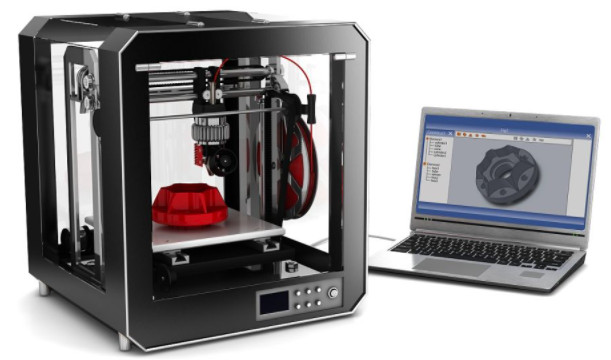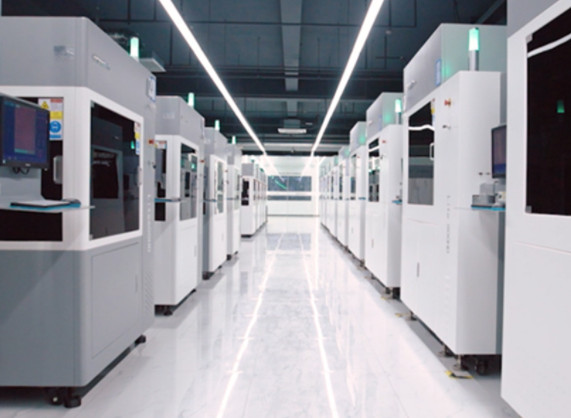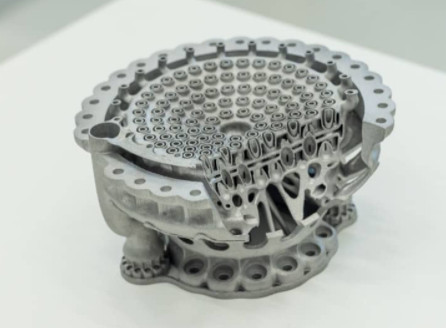3D printing, also known as additive manufacturing, is a process that creates three-dimensional objects by depositing material layer by layer based on a digital model. This technology has transformed industries such as aerospace, healthcare, automotive, and consumer goods by enabling innovative manufacturing solutions. Below, we explore the key advantages and disadvantages of 3D printing, providing a detailed, technical, and systematic analysis to help stakeholders evaluate its applicability for specific use cases.
Advantages of 3D Printing
The benefits of 3D printing stem from its unique additive approach, which contrasts with traditional subtractive manufacturing methods like CNC machining. These advantages make it a preferred choice for prototyping, small-scale production, and specialized applications.
Rapid Prototyping and Reduced Time-to-Market
3D printing enables the creation of prototypes in hours or days, significantly reducing the development cycle compared to traditional methods, which can take weeks or months. For example, a functional prototype can be designed, printed, and tested within 24-48 hours using fused deposition modeling (FDM) printers with materials like polylactic acid (PLA) or acrylonitrile butadiene styrene (ABS). This speed allows engineers to iterate designs quickly, testing multiple variations without the need for costly tooling or molds. In industries like automotive and aerospace, where prototypes are critical for validation, this capability reduces time-to-market by up to 50% in some cases.
Complex Geometries and Design Freedom
Unlike traditional manufacturing, which often requires multiple components or assemblies for complex designs, 3D printing can produce intricate geometries in a single part. This is particularly valuable for creating lightweight structures with internal voids, such as lattice designs used in aerospace components. For instance, laser powder bed fusion (LPBF) can produce metal parts with complex internal channels, achieving densities levels above 99.5% while maintaining structural integrity. This design freedom enables engineers to optimize parts for performance, reducing weight by 20-40% in applications like turbine blades or medical implants.
Cost Efficiency for Low-Volume Production
3D printing eliminates the need for expensive molds or tooling, making it cost-effective for low-to-medium production volumes (typically 1-1,000 units). The process uses only the required material, minimizing waste compared to subtractive methods, where up to 90% of raw material can be discarded. For example, selective laser sintering (SLS) with polyamide (PA12) can achieve material waste as low as 5%. Additionally, 3D printing reduces labor costs, as a single operator can manage multiple printers, unlike traditional setups requiring skilled machinists for each process step.
Customization and Personalization
3D printing excels in producing customized products tailored to individual needs without significant cost increases. In healthcare, this is evident in patient-specific implants, such as titanium hip replacements or dental aligners, designed from CT scans to match unique anatomies. The technology allows for mass customization, where each item in a production run can be unique. For example, stereolithography (SLA) can produce high-resolution dental molds with dimensional accuracy of ±0.1 mm, enabling precise, patient-specific solutions.
Sustainability and Material Efficiency
3D printing is inherently more sustainable than traditional manufacturing due to its additive nature. It uses only the material needed for the final part, reducing waste significantly. Materials like PLA, derived from renewable sources such as corn starch, are biodegradable and non-toxic, enhancing environmental benefits. Additionally, on-demand printing reduces inventory and warehousing needs, cutting transportation-related emissions. For instance, printing parts locally can reduce shipping energy costs by up to 30% compared to global supply chains.
Accessibility for Small Businesses and Hobbyists
The democratization of 3D printing has made it accessible to small businesses and individuals. Desktop FDM printers, priced as low as $200, allow startups and hobbyists to produce functional parts without large capital investments. Open-source software and online repositories of 3D models further lower the barrier to entry, enabling users to design and print with minimal training. This accessibility has spurred innovation in fields like education, where schools use 3D printers to create hands-on learning tools like robotic components.

Disadvantages of 3D Printing
While 3D printing offers significant advantages, its limitations must be carefully considered to determine its suitability for specific applications. These constraints often relate to material availability, production scale, and technical challenges.
High Initial Investment Costs
Industrial-grade 3D printers, particularly those using technologies like direct metal laser sintering (DMLS) or LPBF, can cost between $100,000 and $1 million. For example, a high-end LPBF machine for metal printing may exceed €1 million, making it prohibitive for small businesses. Additionally, specialized materials, such as titanium powder or UV-curable resins, are expensive, ranging from $60 to $120 per kilogram for engineering-grade filaments. Training for CAD software and printer operation further increases costs, requiring skilled personnel with expertise in 3D modeling and process optimization.
Material Limitations
The range of materials available for 3D printing is narrower than for traditional manufacturing. While plastics like PLA, ABS, and polyamide are common, high-performance alloys or specialized composites are often unavailable or require extensive development to ensure printability. For instance, metal 3D printing is limited to materials like titanium, stainless steel, and aluminum, with processing parameters varying by machine, complicating standardization. Brittle materials, such as certain ceramics, are challenging to print due to their susceptibility to cracking under thermal or mechanical stress.
Size Constraints
Most 3D printers have restricted build volumes, typically ranging from 100 x 100 x 80 mm for small desktop models to 400 x 400 x 380 mm for industrial machines. For example, a standard LPBF printer has a build platform of 250 x 250 x 300 mm, limiting the size of parts that can be printed in a single run. While large-scale printers exist for applications like 3D-printed houses, they are specialized and costly. Manufacturers may need to print components separately and assemble them, adding complexity and potential weak points to the final product.
Slower Production for High Volumes
3D printing is generally slower than traditional methods like injection molding for high-volume production. For instance, printing a single complex part via SLS can take 12-24 hours, whereas injection molding can produce thousands of identical parts per hour. This makes 3D printing less competitive for mass production, where speed and scalability are critical. The layer-by-layer process also introduces variability, as each print cycle must be carefully monitored to avoid defects like layer delamination.
Post-Processing Requirements
Many 3D-printed parts require post-processing to achieve desired surface finish, dimensional accuracy, or mechanical properties. For example, SLA parts may need rinsing and UV curing, while metal parts printed via DMLS require heat treatment and machining to remove support structures. These steps can add 20-50% to production time and cost. Surface finish is another concern, as FDM parts often exhibit visible layer lines, requiring sanding or polishing to achieve smoothness comparable to CNC-machined parts (±0.005 mm tolerance).
Mechanical Property Limitations
3D-printed parts may exhibit inferior mechanical properties compared to traditionally manufactured components. For instance, FDM-printed parts can have anisotropic strength, with up to 30% lower tensile strength along the Z-axis due to layer bonding weaknesses. Metal parts printed via LPBF may contain microvoids or residual stresses, reducing fatigue resistance compared to forged or cast metals. These limitations restrict 3D printing’s use in high-stress applications, such as automotive engine components, unless extensive post-processing is applied.

Comparison of 3D Printing Technologies
Different 3D printing technologies offer varying advantages and limitations, depending on the application. The table below summarizes key characteristics of common methods to aid in technology selection.
| Technology | Materials | Accuracy (mm) | Build Speed | Key Advantages | Key Disadvantages |
|---|---|---|---|---|---|
| Fused Deposition Modeling (FDM) | PLA, ABS, PETG | ±0.2 | Moderate (10-100 mm/s) | Low cost, accessible, wide material range | Poor surface finish, anisotropic strength |
| Stereolithography (SLA) | UV-curable resins | ±0.1 | Slow (1-10 mm/h) | High accuracy, smooth surfaces | Limited materials, post-processing required |
| Selective Laser Sintering (SLS) | Polyamide, TPU | ±0.3 | Moderate (10-20 mm/h) | No support structures, durable parts | High cost, rough surfaces |
| Laser Powder Bed Fusion (LPBF) | Metals (Ti, Al, SS) | ±0.1 | Slow (5-20 mm/h) | Complex geometries, high strength | Expensive, post-processing intensive |
Applications and Considerations
3D printing’s advantages make it ideal for specific applications, such as rapid prototyping in product development, custom implants in healthcare, and lightweight components in aerospace. However, its disadvantages, including high initial costs and material limitations, restrict its use in high-volume or high-strength applications. Stakeholders must evaluate factors like production volume, material requirements, and budget when deciding whether to adopt 3D printing. For example, small businesses may benefit from outsourcing to 3D printing services to avoid upfront equipment costs, while large manufacturers can leverage in-house printers for iterative design and low-volume production.
Conclusion
3D printing offers transformative benefits, including rapid prototyping, design freedom, and cost efficiency for low-volume production, making it a powerful tool across industries. However, limitations such as high initial costs, restricted material options, and slower production speeds for large volumes necessitate careful consideration. By understanding these advantages and disadvantages, businesses and individuals can make informed decisions about integrating 3D printing into their workflows, balancing innovation with practical constraints.
FAQ: Advantages and Disadvantages of 3D Printing Technology
What is 3D printing, and how does it differ from traditional manufacturing?
3D printing (additive manufacturing) creates three-dimensional objects by building layers of material (e.g., plastic, metal, resin) based on a digital design. Unlike traditional manufacturing (subtractive methods like cutting or molding), it adds material layer by layer, reducing waste and enabling complex shapes.
What are the key advantages of 3D printing?
Design flexibility: Enables creation of complex, intricate geometries (e.g., hollow structures, lattice patterns) that are difficult or impossible with traditional methods.
Reduced waste: Uses only the material needed for the object, minimizing waste compared to subtractive processes that cut away excess material.
Faster prototyping: Allows rapid iteration of designs—prototypes can be produced in hours instead of days/weeks, speeding up product development.
Cost efficiency for small batches: Ideal for low-volume production (e.g., custom parts) since it avoids expensive molds or tooling required for mass manufacturing.
On-demand production: Enables localized, on-site manufacturing, reducing storage and transportation costs.
Customization: Easily adapts designs to individual needs (e.g., personalized medical implants, custom jewelry).
What are the main disadvantages of 3D printing?
Slow production speed for large batches: Not efficient for mass production; traditional methods (e.g., injection molding) are faster for high-volume outputs.
Material limitations: Limited range of materials compared to traditional manufacturing (e.g., fewer options for high-strength metals or heat-resistant plastics).
Lower structural strength: Layered structures may have weaker mechanical properties (e.g., anisotropy—strength varies by direction) than solid, molded parts.
High initial costs: 3D printers (especially industrial-grade models) and specialized materials can be expensive to purchase and maintain.
Post-processing needs: Many 3D-printed objects require finishing (e.g., sanding, painting, or curing) to achieve smooth surfaces or desired properties.
Intellectual property risks: Digital designs are easy to copy and pirate, raising concerns about counterfeiting.
Will 3D printing replace traditional manufacturing?
Unlikely. Instead, it complements traditional methods: 3D printing is ideal for small batches, customization, and prototyping, while traditional manufacturing remains superior for mass production, speed, and material diversity.
